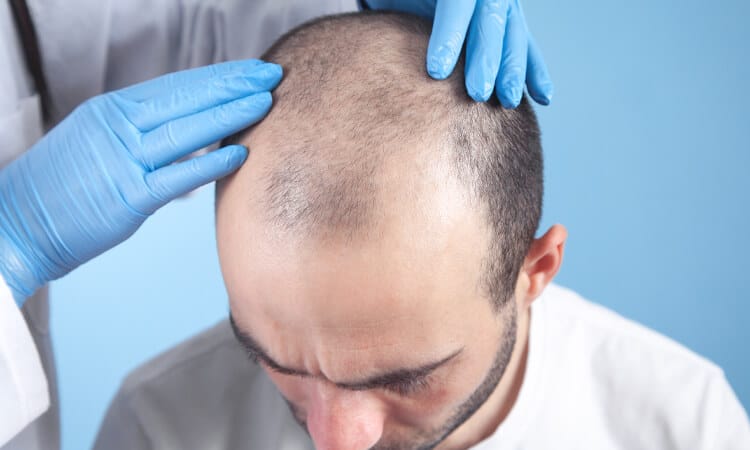Hair Transplants Uncovered: How They Work and What to Expect

Losing your hair can feel like losing a part of your identity. Whether it’s receding around the temples, patchy on the crown, or thinning all over, it’s hard not to notice when your hair isn’t quite what it used to be. And while there’s nothing wrong with rocking the hair you’ve got, modern hair restoration techniques—like hair transplants—have given many people the opportunity to feel more confident about their looks.
But what does a hair transplant really involve? Is it painful? Will it actually work? And most importantly, will it look natural? This guide breaks it down for you, from how hair transplants work to what you can expect during and after the procedure.
What Exactly Is a Hair Transplant?
A hair transplant is a minimally-invasive surgical procedure where hair follicles are taken from one part of the body (usually the back of your head, known as the donor area) and transplanted to an area experiencing hair loss (the recipient area). Hair transplants are typically used to restore hair on the scalp, but they can also be done on eyebrows, beards, and other areas where hair is thin or missing.
There are two main methods used in modern hair transplants:
1. Follicular Unit Transplantation (FUT)
- Also known as the “strip method,” FUT involves removing a thin strip of scalp from the donor area.
- The donor strip is then dissected into individual hair follicles and transplanted into the recipient area.
- While FUT is effective and allows many grafts to be transplanted at once, it does leave a linear scar in the donor area.
2. Follicular Unit Extraction (FUE)
- Instead of taking a strip of scalp, FUE extracts individual hair follicles directly from the donor area using a tiny punch tool.
- These follicles are then placed into the recipient area.
- FUE is less invasive than FUT and leaves minimal scarring—just tiny, barely noticeable dots instead of a linear scar.
Both methods can yield excellent results, and the choice between them often depends on factors like your hair type, the extent of your hair loss, and your surgeon’s recommendation.
Does It Hurt? What to Expect During the Procedure
The good news? Hair transplants are generally not painful. You’ll typically be given local anesthesia to numb the donor and recipient areas, so while you’ll feel some pressure or tugging, you shouldn’t feel pain during the procedure.
Depending on the number of grafts being transplanted, the surgery can take anywhere from 4 to 8 hours. Bring your headphones and a good podcast—you might be lying there for a while! Some clinics even have TVs or allow you to watch movies during the process.
Here’s what the day of your hair transplant might look like:
- Initial Consultation: The surgeon will review your hairline design and confirm the areas to be transplanted.
- Preparation & Anesthesia: The donor and recipient areas are cleaned, shaved, and numbed with local anesthesia.
- Harvesting Hair Follicles: For FUT, this involves removing the donor strip. For FUE, individual follicles are extracted one by one.
- Transplanting Hair: The surgeon carefully places the follicles into the recipient area, positioning them at the right angle and direction to ensure a natural look.
After that, you’ll likely be sent home with aftercare instructions and a follow-up appointment scheduled. Follow https://hairy.co.uk for more information though on what to expect!
The Road to Recovery
Hair transplants are generally low-risk procedures, but recovery still requires some TLC. Here’s what you can anticipate post-surgery:
- Day 1-3: You may experience mild swelling or discomfort, and small scabs will form in the recipient area. Avoid touching, scratching, or washing the transplanted area during this initial healing phase.
- Week 1-2: The scabs will begin to fall off naturally. You can start gently washing your hair, following your clinic’s instructions.
- Month 1: Don’t panic—this is when the transplanted hairs typically “shed” (a totally normal part of the process).
- Months 3-6: New hair growth begins! It might start as fine baby hairs but will thicken over time.
- Months 9-12: By this stage, you should see the full results of your transplant, with thicker, fuller hair.
Pro Tips for a Smooth Recovery:
- Avoid strenuous activity or sweating for at least two weeks post-surgery.
- Sleep in a slightly elevated position to reduce swelling.
- Protect your scalp from the sun—wear a hat or use sunscreen if you’ll be outside.
Will It Look Natural?
One of the biggest concerns people have about hair transplants is whether the results will look obvious. Good news! When done by a skilled surgeon, modern techniques like FUE and FUT allow for incredibly natural-looking results. Key factors that affect the final outcome include:
- Hairline Design: Your surgeon will draw a hairline that complements your facial features.
- Angle & Direction: Hair follicles are placed at specific angles to mimic your natural hair growth pattern.
- Density: The transplant blends seamlessly with your natural hair for a full, even appearance.
Simply put, a well-done hair transplant should be virtually undetectable.
Are Hair Transplants Right for You?
Hair transplants aren’t for everyone, and it’s important to have realistic expectations. Candidates for hair transplants typically share these traits:
- Healthy hair growth in the donor area (usually the back or sides of the scalp).
- Stable hair loss (a good surgeon won’t perform a transplant if your hair loss is aggressive and ongoing).
- A commitment to post-surgery care to protect the transplanted hair and achieve the best results.
If you’re considering a hair transplant, schedule a consultation with a qualified hair restoration surgeon. They’ll assess your hair loss, discuss potential outcomes, and help you determine if this is the right path for you.
A Final Thought
Hair transplants are more than just a cosmetic procedure—they can give people a renewed sense of confidence and self-assurance. If you’ve been struggling with hair loss and are considering a transplant, take the time to research your options and consult with a trusted professional. You’re just a few months away from fuller, natural-looking hair!




